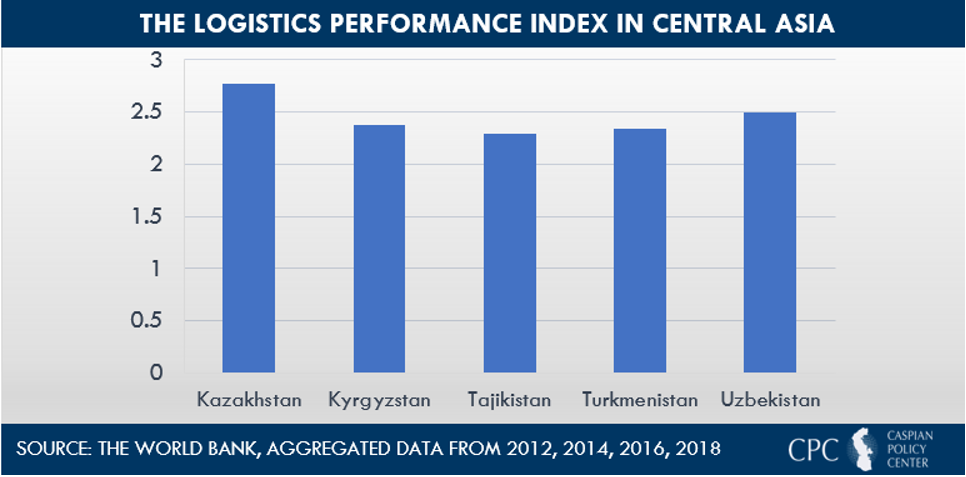Breaking the “Communication Deadlock” as a Way to Facilitate Economic Development in Tajikistan
Recent Articles
Author: Aizhan Abilgazina
01/28/2021
As one of the most isolated countries in Central Asia, Tajikistan is in dire need of investment in its roads and highways. With no ports and a very limited rail network, road development is crucial for Tajikistan’s economic development and trade potential. As the Asian Development Bank’s (ADB) Central and West Asia transport specialist Rika Idei highlighted, “Tajikistan relies heavily on road transport for international and domestic movement of goods and people.” While situated in a strategically important location connecting Russia, China, South Asia and the Middle East, Tajikistan’s unsafe roads prevent the Central Asian country from taking full advantage of its location thus significantly impeding the development of its export-driven industries.
The situation has been further exacerbated due to restrictions and border closures imposed early in 2020 in response to the COVID-19 pandemic. For example, only 3 out of 17 border checkpoints between Tajikistan and Kyrgyzstan - Tursunzade-Saryasiya, Match-Oybek, and Spitamen-Plotina, - have been open for international freight transportation. Uzbekistan has recently opened the Sarazm-Jartepa checkpoint at the border with Tajikistan that will allow for a faster movement of goods between the two states. Still, while there may be positive developments in regard to borders opening up, the deeper problem of poor quality of roads in Tajikistan still persists. Checkpoints at the border mean little if people and goods struggle to read them.

Figure 1: The Logistics Performance Index (LPI) in Central Asia. Source: The World Bank.
The World Bank’s Logistics Performance Index (LPI) shows that based on the aggregated results from 2012, 2014, 2016, and 2018, Tajikistan scored the lowest point in Central Asia taking the 147th place among 167 countries. The evaluation comprises six indicators, including the quality of infrastructure, logistics competence, the ease of managing international shipments, efficiency at customs facilities, tracking and tracing, and timeliness. Though this metric evaluates far more than just road quality, Tajikistan’s poor ground transportation infrastructure plays an important role in its low ranking.
Referring to this problem as the “communication deadlock” in 2010, the president of Tajikistan Emomali Rahmon announced a strategy aimed at bolstering the transportation sector in order to stimulate economic growth, international trade, and entrepreneurship. Officials and policymakers have consistently reiterated the goal of overcoming the communication deadlock as one of the government’s main priorities. Bringing local transport networks in line with international standards, restoration of transport facilities, modernization of roads, and improving data-sharing are critical for achieving this goal.
While government investments play a crucial role in modernizing the sector, external assistance in the form of funding and technical help is critical due to the country’s limited financial resources. Asian Development Bank has been particularly very active in supporting international and regional transport programs and projects in Tajikistan. One of them is the Asian Highway Network project that seeks to establish a well-connected highway network through upgrading already existing roads that will connect member countries of the United Nations Economic and Social Commission for Asia and the Pacific (ESCAP). Tajikistan has three major highways passing through its territory – Asian Highway 7, Asian Highway 65, and Asian Highway 66, - which link the country with South Asia, the rest of Central Asia, and China and are strategically important for the development of trade and transport cooperation. Upon the approval of the Asian Highway Network project, Tajikistan had the largest number of missing transport links after Laos which further reinforced need for new investment and connectivity development in the country.
The Central Asian Regional Economic Cooperation (CAREC) program established by the Asian Development Bank (ADB) is another regional initiative looking to improve road quality and capacity in Tajikistan. Guided by the “Good Neighbors, Good Partners, and Good Prospects” policy, the program aims to improve regional connections between Europe and Asia through better road, aviation, and rail infrastructure. In doing so, the project will also facilitate economic development and promote poverty reduction in the region.
One of the latest ADB projects to support the CAREC goals has been the issuing of a $67 million loan to improve road networks in Tajikistan. The funding will go to restore two sections of road – one from Dangara to Okmazor (28.7 km; 17.39 miles) and the other from Hulbuk to Kangurt (59.5 km; 36.97 miles) – which both connect to the Asian Highway 66, a part of the critical Asian Highway Network linking China and Tajikistan. In addition to financial resources, the ADB initiative will also provide technical assistance in setting up the road management system and offer staff training in data collection and analysis. Moreover, integration of climate change adaptation and disaster management features into the project will further improve the resilience and sustainability of road networks.
Developing relevant and comprehensive national plans in the transport and logistics sectors should also be greatly prioritized by the government. Concrete improvements in road surfaces are vital but must be complemented by initiatives that ease customs procedures, minimize delays at borders, and introduce more effective customs facilities. This, in turn, will reduce the transportation costs, which are the highest in Central Asia and are strongly correlated with slow economic growth. It is also critical for Tajikistan to continue attracting investments in its infrastructure to break the oft-cited communication deadlock that hinders the country’s economic development and regional trade.